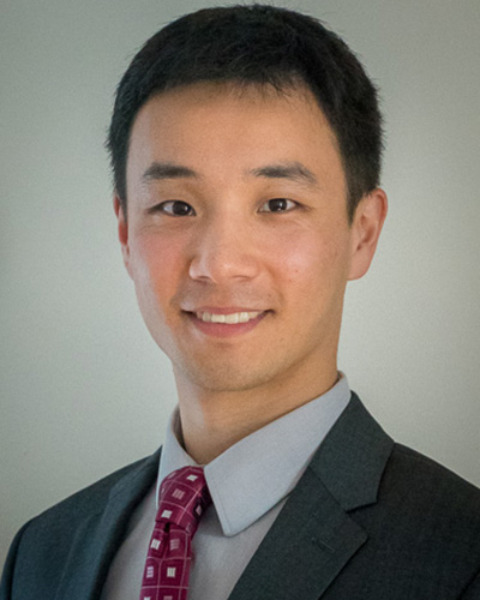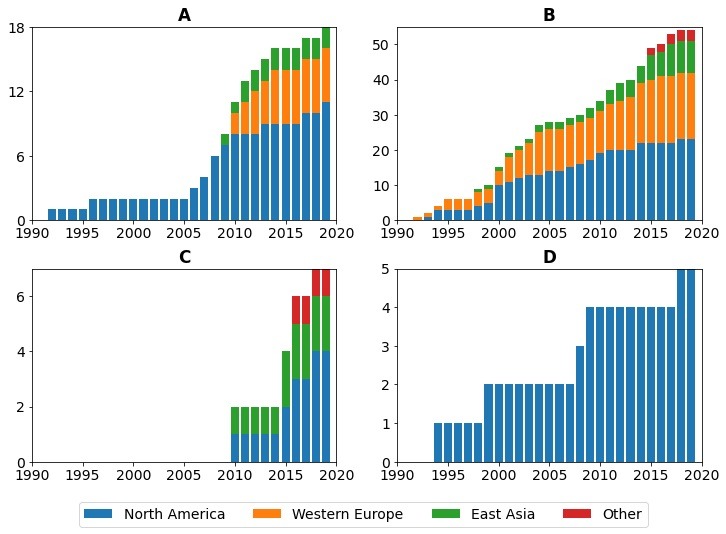Back


Poster Session D - Tuesday Morning
Category: Colorectal Cancer Prevention
D0165 - Geographic Diversity of Data Behind Surveillance Colonoscopy Guidelines in the United States
Tuesday, October 25, 2022
10:00 AM – 12:00 PM ET
Location: Crown Ballroom

Has Audio

Jeffrey Dong, MD
Beth Israel Deaconess Medical Center
Boston, MA
Presenting Author(s)
Jeffrey Dong, MD1, Shaharyar Zuberi, MD2, Lauren Burdine, MD1, Joseph D. Feuerstein, MD3
1Beth Israel Deaconess Medical Center, Boston, MA; 2Beth Israel Deaconess Medical Center, Harvard Medical School, Boston, MA; 3Beth Israel Deaconess Medical Center (BIDMC), Boston, MA
Introduction: The selection of an appropriate surveillance interval after colonoscopy for colorectal cancer screening can minimize unnecessary procedures while preventing the development of interval neoplasia. Both the 2020 US Multi-Society Task Force guidelines and earlier iterations incorporate international data, but not all areas of the world may be represented equally. We examined the studies cited in the US surveillance colonoscopy guidelines to determine the representation of different geographic regions.
Methods: We examined studies which were incorporated into the US surveillance colonoscopy guidelines between 1997 and 2020 for the following categories: normal exam, exam with adenomas, exam with sessile serrated polyps (SSPs), and exam with hyperplastic polyps (HPs). For each category, we calculated the number of studies and total number of patients that came from each region of the world. We also examined trends in the number of studies from different region over time for each of the four categories.
Results: There were 18 studies totaling 9,052,886 patients pertaining to surveillance after a normal exam, 54 studies totaling 226,730 patients for adenomas, 7 studies totaling 20,993 patients for SSPs, and 5 studies totaling 22,645 patients for HPs. Thirty-eight studies (49%) were from North America, 24 (31%) from Western Europe, 11 (14%) from East Asia, and 4 (5%) were from other regions (2 from Israel, 1 from Australia, and 1 from Argentina). The greatest number of studies in all categories came from North America, though studies from other regions increased over time (Figure 1). North America contributed the largest number of patients to studies on normal exams (50%) and HPs (100%), whereas Western Europe contributed the greatest number (61%) for adenomas and East Asia contributed the greatest number (51%) for SSPs.
Discussion: The number of patients included in studies on surveillance after adenomas, SSPs, and HPs were an order of magnitude less than that of a normal exam which could limit the strength of recommendations for these polyp types. Furthermore, nearly all data were drawn from patients in North America, Western Europe, or East Asia with little representation from populations in other regions. Given the multicultural nature of the US population, incorporating research from other regions of the world could improve the generalizability of current surveillance colonoscopy guidelines.

Disclosures:
Jeffrey Dong, MD1, Shaharyar Zuberi, MD2, Lauren Burdine, MD1, Joseph D. Feuerstein, MD3. D0165 - Geographic Diversity of Data Behind Surveillance Colonoscopy Guidelines in the United States, ACG 2022 Annual Scientific Meeting Abstracts. Charlotte, NC: American College of Gastroenterology.
1Beth Israel Deaconess Medical Center, Boston, MA; 2Beth Israel Deaconess Medical Center, Harvard Medical School, Boston, MA; 3Beth Israel Deaconess Medical Center (BIDMC), Boston, MA
Introduction: The selection of an appropriate surveillance interval after colonoscopy for colorectal cancer screening can minimize unnecessary procedures while preventing the development of interval neoplasia. Both the 2020 US Multi-Society Task Force guidelines and earlier iterations incorporate international data, but not all areas of the world may be represented equally. We examined the studies cited in the US surveillance colonoscopy guidelines to determine the representation of different geographic regions.
Methods: We examined studies which were incorporated into the US surveillance colonoscopy guidelines between 1997 and 2020 for the following categories: normal exam, exam with adenomas, exam with sessile serrated polyps (SSPs), and exam with hyperplastic polyps (HPs). For each category, we calculated the number of studies and total number of patients that came from each region of the world. We also examined trends in the number of studies from different region over time for each of the four categories.
Results: There were 18 studies totaling 9,052,886 patients pertaining to surveillance after a normal exam, 54 studies totaling 226,730 patients for adenomas, 7 studies totaling 20,993 patients for SSPs, and 5 studies totaling 22,645 patients for HPs. Thirty-eight studies (49%) were from North America, 24 (31%) from Western Europe, 11 (14%) from East Asia, and 4 (5%) were from other regions (2 from Israel, 1 from Australia, and 1 from Argentina). The greatest number of studies in all categories came from North America, though studies from other regions increased over time (Figure 1). North America contributed the largest number of patients to studies on normal exams (50%) and HPs (100%), whereas Western Europe contributed the greatest number (61%) for adenomas and East Asia contributed the greatest number (51%) for SSPs.
Discussion: The number of patients included in studies on surveillance after adenomas, SSPs, and HPs were an order of magnitude less than that of a normal exam which could limit the strength of recommendations for these polyp types. Furthermore, nearly all data were drawn from patients in North America, Western Europe, or East Asia with little representation from populations in other regions. Given the multicultural nature of the US population, incorporating research from other regions of the world could improve the generalizability of current surveillance colonoscopy guidelines.

Figure: Distribution of studies by region on surveillance interval after colonoscopy with (A) no polyps, (B) adenomas, (C) sessile serrated polyps, and (D) hyperplastic polyps
Disclosures:
Jeffrey Dong indicated no relevant financial relationships.
Shaharyar Zuberi indicated no relevant financial relationships.
Lauren Burdine indicated no relevant financial relationships.
Joseph Feuerstein indicated no relevant financial relationships.
Jeffrey Dong, MD1, Shaharyar Zuberi, MD2, Lauren Burdine, MD1, Joseph D. Feuerstein, MD3. D0165 - Geographic Diversity of Data Behind Surveillance Colonoscopy Guidelines in the United States, ACG 2022 Annual Scientific Meeting Abstracts. Charlotte, NC: American College of Gastroenterology.
